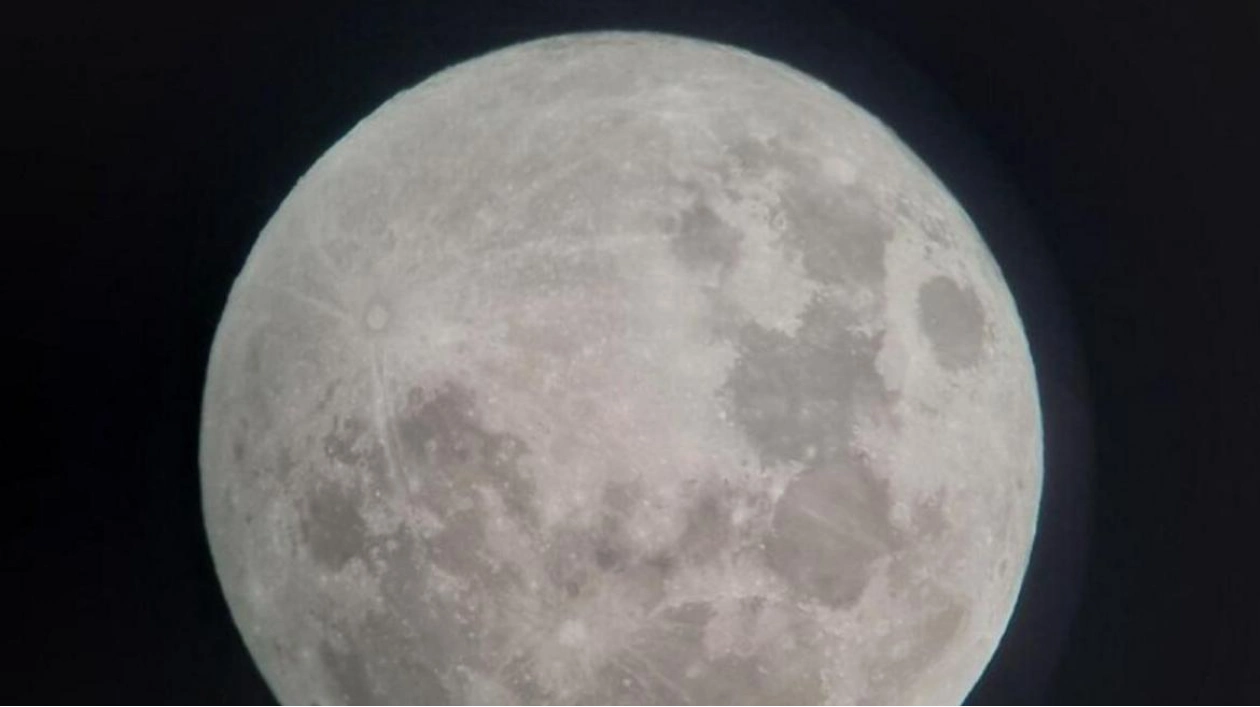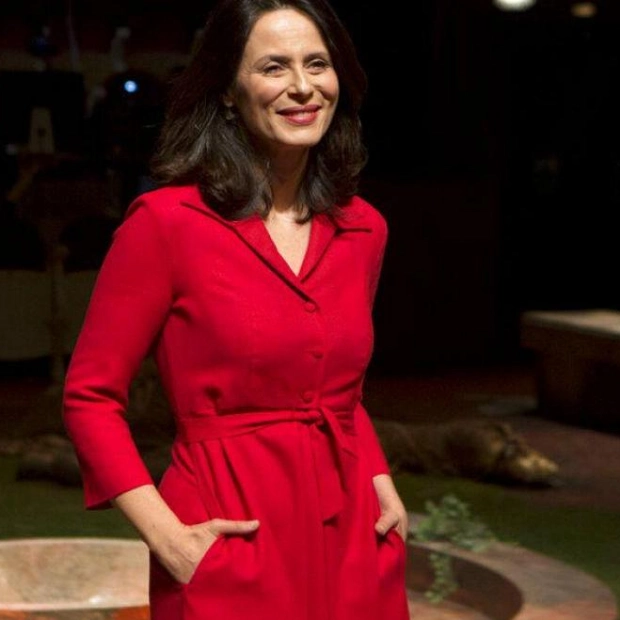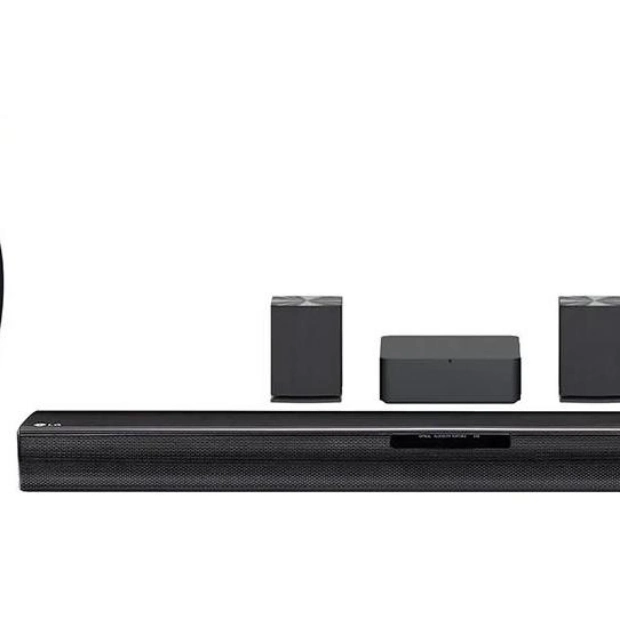October's most significant supermoon of 2024. Image used for illustrative purposes. Photo: Dubai Astronomy Group
2024 has been a remarkable year for space enthusiasts in the UAE. In recent months alone, a mini-moon has orbited Earth, the largest supermoon of 2024 was observed, a city-sized asteroid approached our planet in October, and a rare comet that appears only once every several millennia was spotted in UAE skies. As the year draws to a close, residents have the opportunity to witness a unique celestial event as the last supermoon of the year coincides with the Leonids meteor shower, creating a spectacular sky show on November 16.
Are celestial events becoming more frequent? Experts in the UAE dismiss this notion, explaining that the sky is always filled with events. The perception of increased space activity is largely influenced by media and social platforms, according to Ibrahim Ghounaimat, a crescent observer specialist and member of the International Astronomical Centre (IAC). "Some events are highlighted more due to their rarity or unique features, making them stand out," he added.
While celestial events are generally consistent over time, the increased awareness and interest in astronomy, along with better access to resources like astronomy apps and social media updates, have made people more observant, according to Khadijah Al Hariri, Operations Manager at Dubai Astronomy Group (DAG). Another cosmic phenomenon is set to occur, allowing UAE residents to witness a celestial wonder as the supermoon and Leonids meteor shower combine to create an eventful sky.
The Leonids meteor shower, which occurs annually, is relatively uncommon to coincide with a supermoon, which typically happens three to four times a year. In November, UAE residents can look to the skies after midnight and in the early hours before dawn to spot these bright lights. Although the shower will peak around midnight on November 17 and 18, it will be visible for most of the month. While no equipment is needed to detect the showers, finding a dark, open area away from city lights will provide the best viewing conditions, according to DAG.
DAG is also hosting a viewing event in Al Qudra Desert for space enthusiasts and residents. Attendees will be provided with telescopes and guided by expert astronomers from DAG, who will share insights on the supermoon, meteors, and other celestial objects visible in the night sky. The event will include a guided stargazing session, interactive lectures, and photography tips for capturing these temporary space observations.
However, it is important to note that telescopes are not ideal for viewing the Leonids meteor shower as they move too fast to stay in the field of view, according to DAG. Additionally, the full brightness of the supermoon might obscure some of the meteors due to increased light in the night sky, reducing visibility for fainter meteors, according to IAC's crescent observer specialist.
Every year around November, Earth passes through debris left by Comet Tempel-Tuttle. This comet, discovered independently in 1865 and 1866 by Ernst Tempel and Horace Tuttle, respectively, takes around 33 years to orbit the sun. When orbiting the sun, the comet leaves a dusty trail, and when this debris collides with Earth's atmosphere, it creates fiery and colorful streaks in the sky, according to NASA.
According to DAG, the Leonids can sometimes produce "fireballs – extra bright meteors" and are known for their fast-moving, bright meteors that often leave persistent trails. For astrophotography enthusiasts, DAG recommends using a wide-angle lens and setting your camera on a tripod. An ISO between 1600 and 3200, with a slow shutter speed (5 to 10 seconds), will help capture meteor trails. Aim your camera toward the general direction of the Leo constellation, and a time-lapse is recommended to catch multiple meteors over time.
To capture the supermoon, use a camera with a zoom lens, ideally with a tripod to reduce blur. Use a low ISO and a shutter speed of 1-2 seconds to achieve clear, detailed shots. The final supermoon of the year – Beaver's moon – will be the fourth consecutive one in the 2024 series, following August's blue supermoon, September's Harvest moon, and October's Hunter's moon.
A supermoon occurs when the moon is at its closest point to Earth, appearing larger and brighter than usual. This supermoon will peak throughout the night of November 16 and will be most visible just after moonrise. While residents can simply look up to see the supermoon, telescopes will offer an enhanced view, showing more detail on the lunar surface, according to DAG.
According to Khadijah, the name "Beaver Moon" comes from Native American and colonial traditions in North America, where each month's full moon was named based on seasonal activities or natural events. "November’s full moon marked the time when beavers prepared for winter, and trappers set their last beaver traps before the waters froze."
How do astronomers predict space phenomena? According to Ibrahim, "astronomers rely on astronomical calculations of Earth, the Moon, and comets to forecast events with high accuracy." For instance, the timing of meteor showers relies on the intersection of comets' debris paths and Earth's orbit, which occur at specific times each year. Similarly, supermoons occur during the full moon phase when its elliptical orbit brings it closer to Earth.
Predictive tools, historical data, and astronomical models allow scientists to forecast these events years in advance, the IAC member added. With the UAE increasingly involved in the field of space, residents are increasingly drawn to the field, Khadijah said in an earlier interview with Khaleej Times. Many websites and apps now offer open data, information, and simulations, "allowing anyone to explore and stay informed about upcoming astronomical events", Ibrahim stated.
Source link: https://www.khaleejtimes.com






